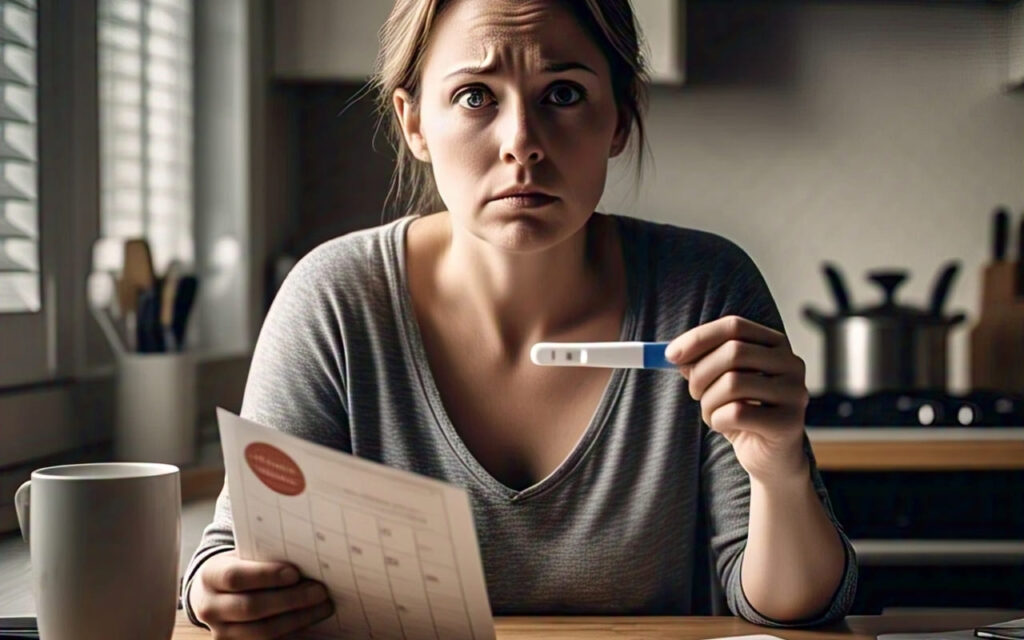It can be emotionally taxing to try to conceive and experience ongoing disappointment. “Why can’t I get pregnant?” is a question that many people have. Unbeknownst to many, female infertility is more prevalent and can have a variety of underlying causes. The good news is that with time, lifestyle changes, and medical assistance, many of these illnesses can be managed or treated.
To help you better understand your reproductive health, we examine the most prevalent reasons of female infertility in this article.
1. Disorders of Ovulation
One of the primary causes of female infertility is problems with ovulation.Your chances of becoming pregnant drastically decrease if you don’t ovulate frequently or at all.
The following are common conditions that interfere with ovulation:
- PCOS, or polycystic ovary syndrome, is a hormonal condition that interferes with regular ovulation.
- Thyroid imbalances: Fertility may be hampered by either hyperthyroidism or hypothyroidism.
Stress, weight fluctuations, or excessive exercise are common causes of hypothalamic dysfunction. - Excessive hair growth, acne, inexplicable weight gain, and irregular or nonexistent periods are warning signals.
2. Damage or Blockages in the Fallopian Tube
Because they facilitate the meeting of the sperm and egg, your fallopian tubes are crucial for conception. Pregnancy may be prevented if these tubes are obstructed or damage.
Typical Reasons for Fallopian Tube Problems:
- Sexually transmitted diseases such as gonorrhea or chlamydia are frequently the cause of pelvic inflammatory disease (PID).
- Prior surgeries, particularly those that have been performed on the abdomen or pelvis.
- The tubes may become blocked by endometriosis scar tissue.
- How a diagnosis is made: usually by means of imaging procedures such as laparoscopy or hysterosalpingography (HSG).
3. Endometriosis
When the tissue that ordinarily lines the uterus develops outside of it, usually on the ovaries, fallopian tubes, or other pelvic structures, it is known as endometriosis. Inflammation, adhesions, and scarring are all possible side effects of this illness that might affect fertility.
Among the symptoms are:
- Period pain, discomfort during sexual activity, high menstrual flow, and persistent pelvic pain
- Endometriosis may impair the quality of the egg itself or make it more difficult for the egg to pass through the fallopian tube.
4. Abnormalities of the Cervical or Uterine

A fertilized egg may not implant or remain implanted due to structural problems in the uterus or cervix.
For instance:
- Fibroids: Uterine growths that are not malignant.
- Polyps: Innocent, little growths that could prevent implantation.
- A septate or bicornuate uterus are examples of congenital abnormalities.
- A narrowing of the cervix, known as cervical stenosis, can stop sperm from getting into the uterus.
- These anomalies can occasionally be fixed surgically and are frequently identified by hysteroscopy or ultrasound.
5. Fertility Decline Associated with Age
Female fertility is significantly influenced by age. You produce fewer and lower-quality eggs as you age. The 20s and early 30s are when women are most fertile.Fertility begins to decline more quickly after age 35, and there is a higher chance of miscarriage or genetic abnormalities.
If you’re over 35 and have been trying to conceive for six months, fertility professionals advise getting treatment.
6. Environmental and Lifestyle Factors
“Why can’t I get pregnant?” here is the answer.can occasionally be found in routine behaviors or exposures.
Among the variables that may impact fertility are: smoking, alcohol consumption, obesity or underweight, poor nutrition, elevated stress levels, and exposure to environmental pollutants.
Your chances of getting pregnant can be greatly increased by changing your lifestyle, such as by quitting smoking, controlling your stress, and keeping a healthy weight.
7. Infertility Without Cause
Even after extensive testing, the cause of infertility is unknown in roughly 10–20% of instances. We call this infertility that cannot be explained.
This diagnosis is frustrating, but it doesn’t indicate you won’t get pregnant; rather, it suggests there may be more complex elements at work. Many couples in this group eventually become pregnant either naturally or through in vitro fertilization (IVF) or intrauterine insemination (IUI).
When to Consult a Fertility Expert
You should see a physician with fertility expertise if you have been seriously trying to conceive for an extended period of time (or six months if you are over 35).Better results and more effective treatment choices can result from early intervention.
Concluding remarks
Understanding the possible causes of infertility is the first step to seeking a solution, even though it might feel lonely. Modern medicine provides a wide range of diagnostic and therapeutic options for a variety of conditions, including endometriosis, fallopian tube problems, and ovulation disorders. Don’t give up; with the correct assistance, many infertile women go on to have healthy pregnancies.
FAQs
You might be ovulating without releasing a healthy egg, or there could be other underlying issues like endometriosis or hormonal imbalances.
Common causes include PCOS, thyroid issues, blocked fallopian tubes, ovulation disorders, and age-related decline in egg quality.
See a fertility specialist after 12 months of trying if you’re under 35—or after 6 months if you’re over 35.
Yes. Chronic stress, poor diet, smoking, and lack of sleep can disrupt hormones and lower fertility in women.



1 Comment
Hi, this is a comment.
To get started with moderating, editing, and deleting comments, please visit the Comments screen in the dashboard.
Commenter avatars come from Gravatar.